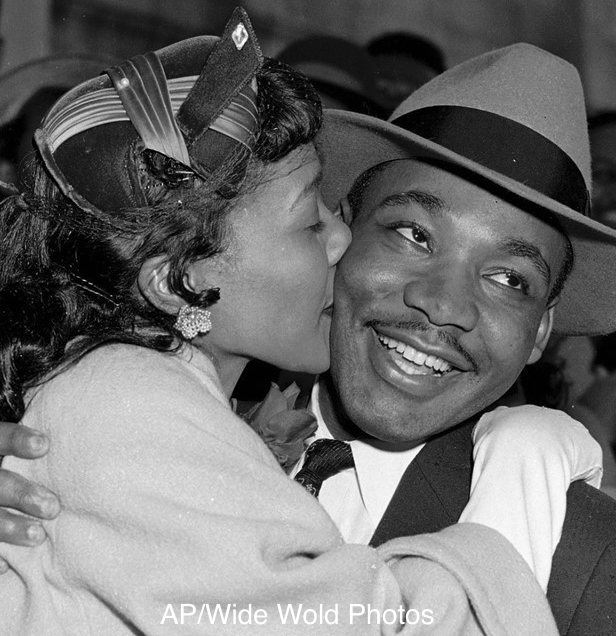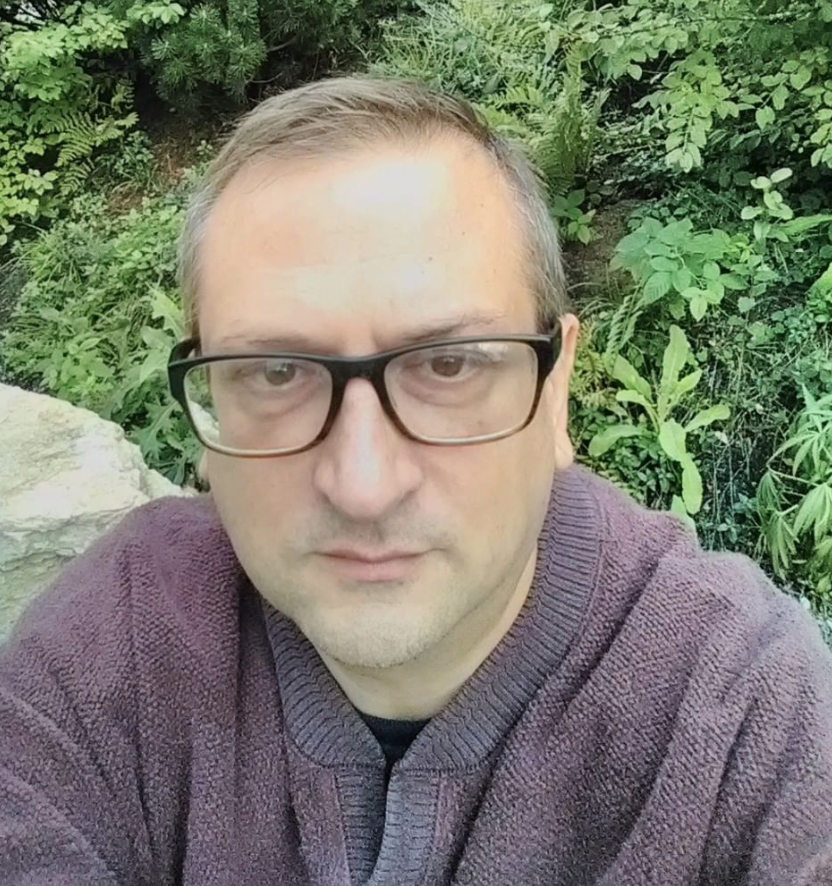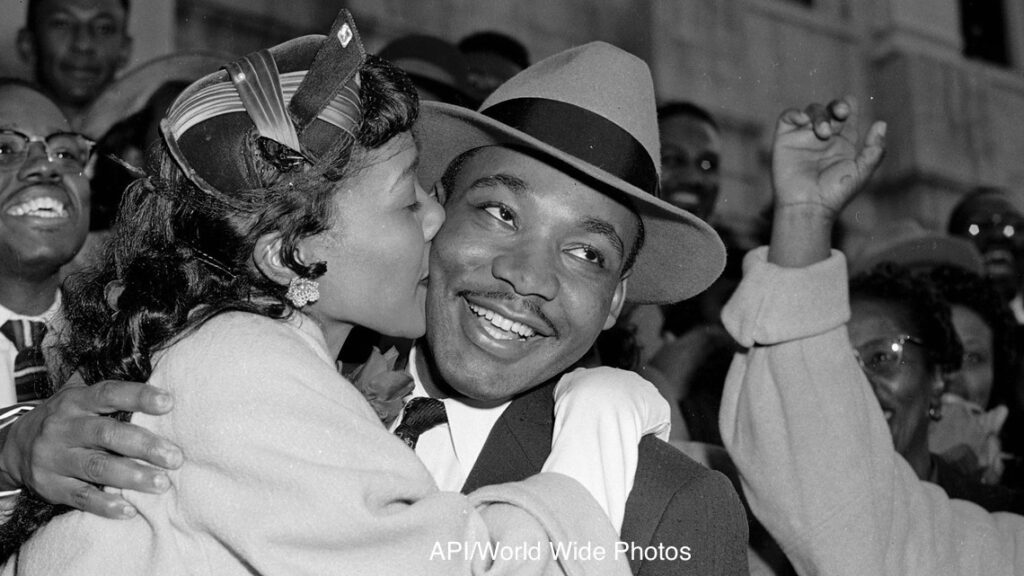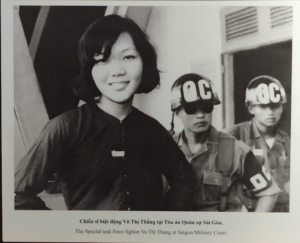Smile, You’re a Progressive Christian!

Last week an Anglican minister from the UK attacked Progressive Christians, saying they are “fake” and that their beliefs are a tool of the devil. This was covered by various news sources in the US and UK. This perplexed me greatly as, first, Progressive Christians want to honestly understand what the Bible is saying: the good, the bad and the ugly. Furthermore, they are committed to living the good part, the message of love and toleration in the Gospels. You get no racism, no sexism, no homophobia, no classism…no negative stuff at all from Progressive Christians. You get positive people doing positive things: critical thinkers who want to become more humane and work toward a more humane society. This is fake Christianity?
Did you know, by the way, that Martin Luther King Jr. would have fit the basic two-pronged definition of a Progressive Christian above? We know about his commitment to non-violent social change, but did you know he also interpreted the Bible non-literally? Please read: The Autobiography of Martin Luther King Jr. (1) which was edited by Clayborne Carson. King wrote, “At the age of thirteen, I shocked my Sunday school class by denying the bodily resurrection of Jesus. Doubts began to spring forth unrelentingly.” (King p. 6)
At Morehouse College things really heated up. “It was then that the shackles of fundamentalism were removed from my body. More and more I could see a gap between what I had learned in Sunday school and what I was learning in college…I could not see how many of the facts of science could be squared with religion.” (King p.15)
I also think that what makes progressive Christians special is the joy that one can feel by embracing this critical and activistic approach to the Gospels. To make my argument, I want to share two photos with you. One is of Martin Luther King Jr. after he had been convicted of a crime based on an unjust application of a law.
The other is of a Vietnamese revolutionary who had just been sentenced to 20 years of hard labor by a military tribunal. Both of them are smiling. This type of smile could well represent the attitude of a progressive Christian, because this type of smile represents, more than anything, the joy of being engaged in something bigger than oneself, something which is meaningful and transformative and to the benefit of others. It is the joy of hope in action.
If you are a Progressive Christian, it means that there is still someone out there fighting the good fight, fighting for truth, fighting for goodness, fighting for joy. It’s the type of smile that reflects an inner joy that one carries along every day, even if a person is going through difficult and trying times.
The photo of Martin Luther King Jr. was from March 22nd, 1956. We all know that King helped organize the Montgomery Bus Boycott. But the details of the year-long boycott are harrowing. The authorities in Montgomery used various means of intimidation to try to break the boycott. It was a boycott that was opposed through dirty tactics. For example, when Black folks organized carpools, police officers would deliberately pull cars of Black folks over and arrest the driver for some fake offense. Martin Luther King was once arrested for allegedly driving 5 miles per hour faster than a speed limit. King and others received numerous death threats and his house was fire-bombed.
At another point, it was discovered that there was an obscure anti-boycott law in Alabama. The authorities pulled it out and used it against the Montgomery bus boycotters, arresting scores of people for not riding the Montgomery buses. There was joy.
“At the jail, an almost holiday atmosphere prevailed. People had rushed down to get arrested…Many had gone voluntarily to the sheriff’s office to see if their names were on the list, and were even disappointed when they were not.” (King, p. 87)
King was found guilty of violating the state’s anti-boycotting law, but was given a minimum penalty for fear of public backlash. Cases of other defendants were postponed because King’s lawyers appealed the case. King wrote, “Ordinarily, a person leaving a courtroom with a conviction behind him would wear a somber face. But I left with a smile. I knew I was a convicted criminal, but I was proud of my crime.” (IBID)
Later, in desperation, the authorities of Montgomery decided to just plain arrest people who were carpooling. At this point, the US Supreme Court finally rendered the decision that segregated buses were unconstitutional. So, you might say that the year-long boycott was not necessary – the Supreme Court was going to decide against segregation on buses anyway. Martin Luther King Jr. disagreed with this attitude. Galvanizing a population that the White leaders thought they had beaten down was the great victory. Getting folks to stand up for themselves and to work for positive social change through nonviolent means was the victory. The bus boycotters had defeated apathy and despair. Martin Luther King Jr. wrote that he had committed “…the crime of seeking to convince my people that noncooperation with evil is just as much a moral duty as is cooperation with good.” (King, p. 88)
I spotted the other photo in the Ho Chi Minh City Museum when I was visiting Vietnam. It is the type of photo that immediately arrests your attention. The young woman engages you directly with her warm smile and slightly tilted head. We sense her joie de vivre, see the carefree wisp of hair hanging over her forehead, notice her hands placed on her hips in serene and breezy defiance. What gives an ominous impact to the image is the awareness of this delightful person’s apparent situation. She is wearing a thin prison shirt and is accompanied by two implacable military guards. Knowing about the brutality of the Vietnam War and the raw hatred of the South Vietnamese government toward prisoners from the North, I expected that she had been executed. Indeed, the photo next to hers in the museum is that of a bold, young, male North Vietnamese soldier being led off for execution by the same types of military guards.
I realized I was looking at something remarkable and astonishing. I was looking at a photo of a kind, young, vital and idealistic person in alarming circumstances who was not acting with the fear and anxiety one would expect. On the contrary, despite everything, she seemed to be experiencing joy. It was almost as if the current confrontation between injustice and herself had generated that joy. Her very participation in a movement to bring freedom and unity to her country left her feeling joyous, even under these circumstances.
In the very process of standing opposed to what was obviously wrong, joy blossomed in her. Here, outside a kangaroo courtroom stood a young woman meeting our gaze with a carefree sense of love, courage, humanity, commitment and compassion.
I found myself silently whispering to myself in the museum, “Please God, please don’t tell me they had to torture and kill this woman.” I whispered this little prayer knowing full well of the horrors that so many Vietnamese endured through foreign military occupations throughout the 20th century. I had visited the Hoa Lo prison in Hanoi where the French had imprisoned and executed Vietnamese freedom fighters and the conditions there had been shockingly appalling.
A truly great photo can have this type of timeless grip, especially when the subject is so lively and dynamic and when the meaning resonates with such courageous significance and clarity. This is part of the legacy of the best that humanity offers in its struggle for justice and fairness. This is an important photo which should be seen, like the best photos ever, because reflection on this image can only benefit a person with greater and greater insight and mercy.
Later, I showed the picture on my phone to a Vietnamese friend, who casually said, “Oh, that’s Ms. Vo. Oh yes, she was quite famous. She used to be the Minister of Tourism for Vietnam for a while. She died a few years ago.” I could have cried learning she had survived that ordeal depicted in the photo. She had become a national hero and she was given a meaningful job by the government through which she could help her people. She died of natural causes in 2014 at the age of 68. The president of Vietnam posthumously awarded her the title of Hero of the Peoples Armed Forces.
On that day of the photo, Vo had been sentenced to 20 years of hard labor by a military court in South Vietnam for attempting to assassinate a spy in Saigon during the Tet Offensive of 1968. Every Vietnamese child to this day knows what she said in court. After she was sentenced to 20 years, she said to the court officers: “So you really think your corrupt government will last another 20 years?” The government fell within 6 years of Vo’s sentencing. She had been released a year earlier than that due to agreements in regard to prisoner releases.
Vo had been tortured and imprisoned numerous times during the war, but she had never lost her spirit. Indeed, she told her companions that prisons were a great type of school for the training of the will and spirit of a revolutionary soldier. She was considered a heroine by her peers, and she was loved and respected by those who served alongside with her.
What is most remarkable is that Vo experienced and demonstrated such joy through such adversity and this is something that we may try to master. Not only for our own sakes, but for the sake of the outcome of our own personal and public struggles, we need to believe that even the most extreme adversity does not have to engender a grim and corrosive response in us. If we succumb to bitterness, self-pity, hostility or malice from our struggle, how can the joyous outcome we hope for spring from this? Paul even evidenced this type of joy when he wrote his letter to the Philippians from prison.
It would be ideal if one’s struggle were always joyous and one would not have to feel the stresses and anxieties of a fierce struggle. Recall that after Martin Luther King Jr. had been assassinated at the age of 39, they performed an autopsy on him and were shocked to see that his heart looked like that of a 60-year-old. How heartbreaking it is that he must have suffered so much stress and anxiety during his campaign for Civil Rights and social justice. Underlying that, and you sense this from reading his writings, surely there was, however, the Christian joy of knowing that one is doing the right thing, the deep joy that comes from a love which motivates action, even against fierce resistance and hatred.
As we all move forward, perhaps we should examine this issue more closely. To what extent can we accept joy into our struggles? Perhaps we should teach this more strongly, more boldly, hold it as an expectation. Perhaps we can encourage each other to aspire to more joy in our difficulties – see how far it is possible to go. In our inner struggle, in our desire to become better people, to overcome any aspects of ourselves that might hurt others or ourselves, as we search for and wait for ways to rise to a higher level of goodness, our overriding emotion must be joy.
After all, it works. Faced with frustration you can dissolve and replace that feeling with joy quite easily. Every activist, everyone working toward the betterment of him/herself and the world should choose joy early and often. Malice, hatred, irritation…there is no reason to succumb to that stuff. Think of what creates the joyous and optimistic and allow the negative to be dissolved and replaced by this rejoicing. Bitterness is the deceiver, joy is the truth about our struggles and journeys.
Victor Frankl wrote that “Everything can be taken from a human but one thing: the last of the human freedoms – to choose one’s attitude in any given set of circumstances, to choose one’s own way.” Joy becomes the big, emotional cleansing device – it just forces the negative emotions to chemically cycle out and disappear, to be replaced by something much better for everyone. Bitterness is counterproductive to the struggle. Unless the work for justice derives from joy, we risk creating more harm than good.
We often become embittered and malicious through negative experiences, especially experiences with dishonesty, hypocrisy, injustice and unfairness. This attitude is also counterproductive to our most humane desires. Again, unless the work for justice derives from joy and compassion, we risk creating more harm than good.
A conscious decision to feel joy in place of a destructive emotion is a choice for doing the right thing the right way. It is not self-deception, it is the raw impact of the truth of your growth and development, the beauty of your journey, hitting you. Joy is the most potent negative emotion buster. It is the emotion which keeps one’s human spirit alive and also brings people together, which encourages others to grow, which allows change to happen.
In our ethical or humane development, we have a responsibility to others and a responsibility to ourselves. Goodness (for others) and joy (for ourselves) walk hand in hand. It would be a tragedy to expect suffering from those who undertake an effort toward moral change. Emotions are readily manipulatable. They can be rejected. They can be chosen. Positive, ebullient emotions help one conquer obstacles. It is time to celebrate the daring and heroism of joy. Martin and Ms. Vo, I pray I rise to the level of joy you did, so that I can be of real service in the world.

Daniel Gauss is a graduate of the University of Wisconsin and Columbia University. He has been published on numerous platforms dealing with art and culture and has been working in the field of education for over 20 years. He currently teaches in Shenzhen, China.
(1) Carson, Clayborne (editor), The Autobiography of Martin Luther King, Jr., Intellectual Properties Management, Inc., New York, New York 1998


